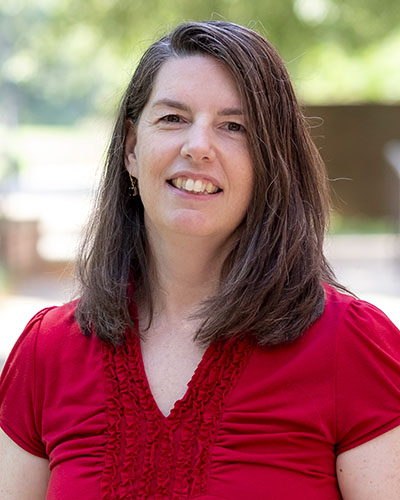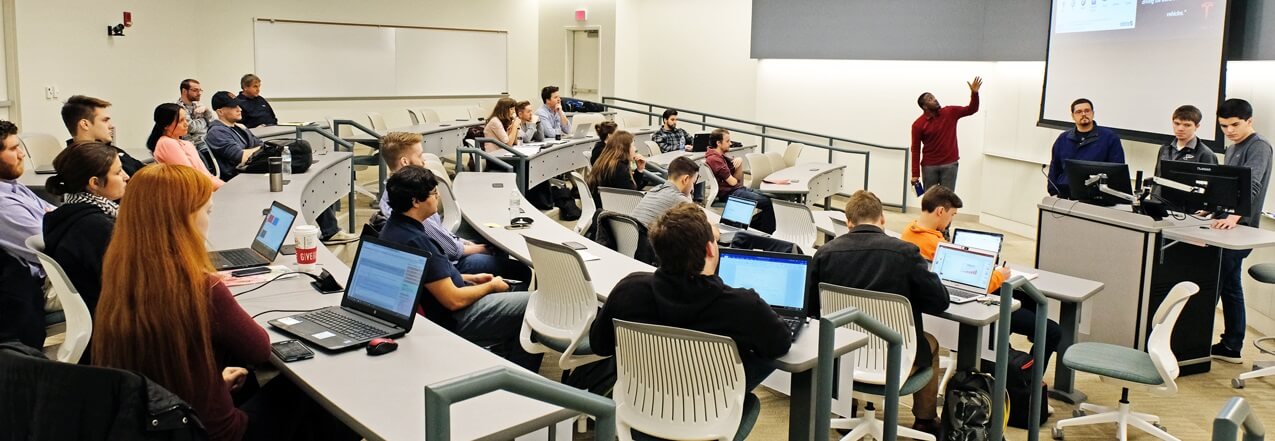Transform UMSL: Curriculum Alignment Process
Driven by student success, the University of Missouri–St. Louis is engaging in a Curriculum Alignment Process as part of an initiative to establish streamlined degree pathways. The process seeks to:
- Provide students with a more accurate and simpler picture of the courses needed to complete a degree program, thereby creating a clear path to graduation and reducing the chance of students paying for excess credits.
- Define each program’s student learning outcomes and demonstrate how specific courses help students acquire the expertise, skills and knowledge needed to be successful with their particular degree.
- Determine the frequency and sequence of courses to give students more opportunities to take required courses and reduce the time to graduation.
- Determine the course delivery modes – from traditional to fully online – that best serve students and support learning outcomes.
Overview
Charged with leading the Curriculum Alignment Process (CAP), Keeta Holmes and her team work closely with faculty, department chairs and deans to align our curriculum with the needs of students while establishing a clear path to graduation. the team assists departments by providing a framework and resources for each phase of the project, particularly in the areas of program outcomes, curriculum mapping, and assessment of student learning. They further assist departments by providing guidance on best practices for successful pathways to degree completion and by assisting departments when setting priorities.
While academic departments regularly review their specific curriculum, this effort allows the university to look globally at a student’s education path from start to finish and challenges faculty to reflect critically on how to streamline course offerings to provide a clear path to graduation without excess costs for students.
In CAP, each department considers the courses students need to meet their program outcomes and trims what does not contribute to that end. While some departments may not have to cut a single course or section, other departments find they have several that do not effectively contribute to their defined outcomes.
The Curriculum Alignment Process is a concurrent step that supports the university’s strategic planning efforts, specifically the Compact for Excellence in Student Success, as well as the university’s academic program prioritization, five-year fiscal plan and HLC Accreditation efforts. As part of CAP, academic departments review and revise program outcomes with help and resources provided by Holmes and her team. CAP liaisons in each academic unit work with faculty colleagues to develop a streamlined curriculum, sustainable 2-year schedule, and academic map for each major, minor and certificate program that aligns with the revised outcomes. CAP liaisons, department chairs, and college administrators collaborate with Holmes and her team on institutional strategies to refresh and revitalize our degree programs. We also build materials to share with students the exciting opportunities that our UMSL degree programs provide.
As with any proposed curriculum changes, the Curriculum & Instruction (C&I) committee of each college, as well as the Faculty Senate, approve any changes to degree programs. Each department submits all changes to their designated programs to the committee for review, approvals and subsequent updates to the UMSL Bulletin.
2024 - 2025 Academic Year Programs - Upcoming
- College of Nursing, DNP Program
- College of Optometry
- School of Social Work
- Joint-Engineering Undergraduate Program
- Assessment Plan Review and Refinement, Participating Departments:
- College of Arts & Sciences: Art & Design, BLS, BIS, Biology, Criminology & Criminal Justice, Computer Science, Economics (Grad), History, Math, Organizational Leadership BS, Political Science (Grad), Philosophy (Grad)
- College of Business Administration: Accounting, Finance (FinTech MS)
2023 - 2024 Academic Year Programs in Progress
- Assessment Plan Review and Refinement, Participating Departments:
- College of Arts & Sciences: Biology, Economics, Music, Philosophy
2022 - 2023 Academic Year Highlights
- College of Nursing, Undergraduate and Graduate Programs
- College of Arts & Sciences, Studio Art BFA, Graphic Design Emphasis area
- Assessment Plan Review and Refinement, Participating Departments:
- College of Arts & Sciences: Chemistry & Biochemistry, Criminology & Criminal Justice, Language & Cultural Studies, Political Science, Sociology,
- College of Business Administration, Undergraduate and Graduate Programs
- College of Nursing, Undergraduate and Graduate Programs
2021 - 2022 Academic Year Highlights
- College of Business Administration, Undergraduate and Graduate Programs
- College of Education, Undergraduate and Graduate Programs
2020-2021 Academic Year Highlights
- College of Arts and Sciences, Graduate Programs
- College of Arts and Sciences, Math Undergraduate Programs
- College of Arts and Sciences, 2+3 Programs
- College of Business Administration, Undergraduate and Graduate Programs
- College of Education, Undergraduate and Graduate Programs
2019-2020 Academic Year Highlights
- Crafted and shared promotional materials in the form of degree program academic maps for use at UMSL Days and by recruiters and advisors.
- Began faculty learning communities around teaching and learning challenges in introductory STEM courses, statistics, and writing.
- Established departmental goals for graduate programs in College of Arts and Sciences
- College of Arts and Sciences, Music undergraduate programs
2018-2019 Academic Year Highlights
- College of Arts and Sciences
- Pierre Laclede Honors College certificate programs . In the first phase, Honors College and each CAS
Curriculum Alignment Process Phases
Phase 1: Program Outcomes
1) Review and update outcomes for all degree programs
2) Differentiate between BA and BS degrees
3) Differentiate between major, minor and certificate programs
Phase 2: Curriculum Mapping
- Consider new avenues for students within your degree programs
- Review course goals and assessments
- Align courses to program outcomes
- Streamline curriculum
- Archive, combine, and/or consolidate courses
- Review required courses
- Review electives and consider alternative elective groupings
Phase 3: Sequencing, Staffing, and Scheduling
- Identifying challenges and opportunities in each degree pathway related to student success and completion
- Determine Course Frequency
- Plan course staffing
- Plan for course delivery options
- (Online, Blended, F2F)
- (16wk, 8wk, 4wk, 2wk)
- (Nights, Weekends)
Phase 4: Program Assessment Planning
Following the UMSL Degree Program Assessment Handbook to
- Design/Update an assessment plan for each degree program
- Update criteria/success for each outcome
- Plan for analyzing and reporting results
- Identify examples of evidence of student learning (course- and program-level plan)
More information will be available on this website as the process continues.
Campus and Academic Leaders Forum (2018) - Complete College America Slides
Success Stories and Additional Resources
- The University of Rhode Island increased its student completion rates (+6.3%) by structuring its curriculum and changing its gen-ed curriculum. Read more.
- Eight years ago, Indiana partnered with Complete College of America to increase graduation rates and close completion gaps for underrepresented students. They have implemented several programs to reach these goals: 1) 15 to Finish, 2) Math Pathways, 3) Corequisite Support, and 4) Academic Maps with Proactive Advising. Read more.
- Complete College America's Dashboard provides college completion metrics for each state in the alliance (40+ states are part of the alliance). The interactive dashboard allows you to see the metrics for first-time full-time students, first-time part-time students, and transfer students by state, degree program. You can also filter for demographic variables. Access the data dashboard here.
- The University of Hawaii report fantastic results from their 15 to Finish campaign, nearly doubling the number of first-time freshmen taking 15+ credits resulting in higher end-of-semester GPAs and higher credit completion rates.
- The Educational Advisory Board (EAB) share similar data about increased GPA scores and greater retention rates when taking at least 15 credit hours/semester. They also found that students who did this in their first year were 19% more likely to graduate in four years.
- The Tennessee Board of Regents found that in state universities, students who earn 9 hours in their major during their first year graduate at a rate of 53% compared to only 35% for students who did not attempt 9 hours in their major.
Contact Information

Keeta M. Holmes
holmeskm@umsl.edu
Assistant Vice Provost for Academic Innovation
Director, Center for Teaching and Learning
Office: 517 Lucas Hall
Phone: (314) 516-7134

Jennifer McKanry
mckanryj@umsl.edu
Assistant Director, Center for Teaching and Learning
Phone: (314) 516-4513
Office: 515 Lucas Hall
